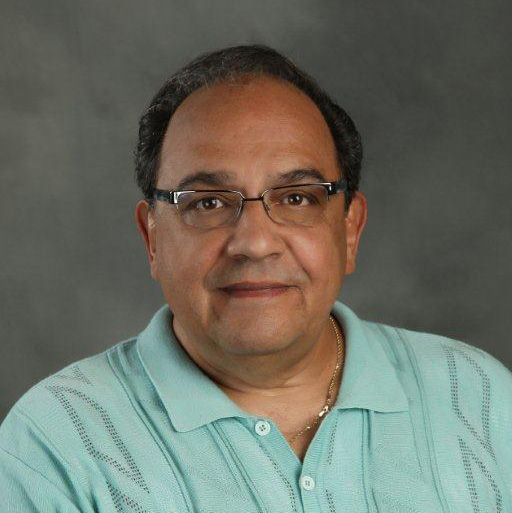 August 2017
August 2017
The following Q&A is the first in an occasional series of conversations with policy and opinion leaders with an interest in and commitment to high-quality education research.
Julio E. López-Ferrao joined the former National Science Foundation (NSF) Division of Educational System Reform as a program director in 1996 and has served in a range of roles throughout his time at NSF. He has been involved in more than 250 NSF-supported projects. As a program director in the Division of Research on Learning (DRL) in Formal and Informal Settings, he is currently responsible for a comprehensive portfolio of awards from the Discovery Research K–12 program; Innovative Technology Experiences for Students and Teachers; Inclusion across the Nation of Communities of Learners of Underrepresented Discoverers in Engineering and Science (NSF INCLUDES); STEM + Computing Partnerships (STEM+C); and the Faculty Early Career Development Program (CAREER).
Q: Tell us a little about your current role at NSF’s Directorate for Education and Human Resources.
A: I currently manage a total of 50 projects funded by most of the programs mentioned above, including a National Academies of Sciences’ consensus study about English language learners and STEM education. Until very recently, I was the DRL CAREER Lead Program Officer and one of the two Directorate for Education and Human Resources’ (EHR) representatives to the NSF CAREER Coordinating Committee. In August 2017, I was assigned to manage the Albert Einstein Distinguished Educator Fellowship Program.
Q: You led EHR’s Faculty Early Career Development Program (CAREER) for the past ten years. What are some aspects of this program that you would like to highlight to early career scholars who are interested in applying for this grant?
A: Early-career scholars, especially women, members of underrepresented minority groups, and persons with disabilities should view CAREER as a unique opportunity to conceptualize and implement ideas relevant to their professional growth and independent careers that enable them to become not only outstanding researchers, but also exceptional STEM educators through the integration of research and education, and to lead advances in the mission of their departments and organizations. Similarly, the program offers the possibility of being selected as a nominee for the Presidential Early Career Awards for Scientists and Engineers from among the most meritorious recent NSF CAREER awardees.
Q: What overall advice would you provide to early career scholars applying for NSF grants?
A: Early conceptualization of their projects based on information, guidelines, and suggestions included in the current EHR CAREER program solicitation NSF 17-537 and the EHR CAREER Dear Colleague Letter, NSF 17-093. In particular, potential CAREER investigators should focus on the proposed research design and methodology; the integration of research and education; evaluation; and recommended advisory boards and additional expertise needed throughout project implementation. Consultation with cognizant program directors from EHR divisions is highly recommended.
Q: Beyond CAREER, what are some other funding opportunities in EHR that would be of interest to education researchers?
A: Here are the other EHR programs and additional funding opportunities for early career researchers.
Q: What emerging areas of research do you think are ripe for study or may be currently underrepresented in the EHR portfolio?
A: Student assessment has emerged as a critical priority in the evolving STEM education landscape. For assessment to be a driving knowledge engine that moves STEM education forward, it must be integrated with systems of learning and teaching. Education systems currently lack sophistication in understanding and addressing the different purposes of assessment and how they relate to each other and to the standards for a particular subject. The entire STEM assessment domain needs to be revisited, as well as the development of appropriate instruments, in order for this critical component of the learning cycle to become a driving knowledge engine that moves STEM education forward.
Q: What are some of the findings from the research projects that you’ve been involved with during your time at EHR that have impacted STEM education?
A: Findings and insights from research point to at least three domains related to STEM education:
- Equity must be at the center of every reform effort; it cannot be marginalized or isolated from learning experiences that lead to high achievement in STEM by all students. The pursuit of equity in STEM education requires detailed attention to the circumstances of specific demographic groups, and claims of high-quality instruction and learning can only be made in the context of inclusion of all students and every student subpopulation.
- Improvement in K–12 STEM education will not occur unless all components of the system—curriculum, instruction, assessment, and policies—change so that they are aligned with an agreed-upon framework’s vision.
- STEM learning involves learning a system of thought, discourse, and practice—all in an interconnected and social context—to accomplish the goal of working with and understanding scientific ideas. Understanding develops over time, including practices, crosscutting concepts, and disciplinary core ideas.
Q: What inspired you to be involved in education research as part of the federal government?
A: The need to contribute to ensure high-quality, equitable STEM education for all K–12 students; the prevailing national STEM achievement gap among this student population; the lack of available field-tested and research-informed curriculum models and resources to assist teachers in improving their instructional practices; and the urgency to ensure excellent STEM teaching, learning, and assessment.
López-Ferrao may be contacted at jlopezfe@nsf.gov.